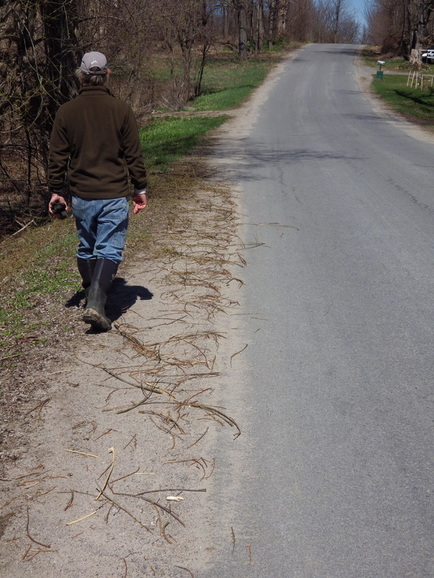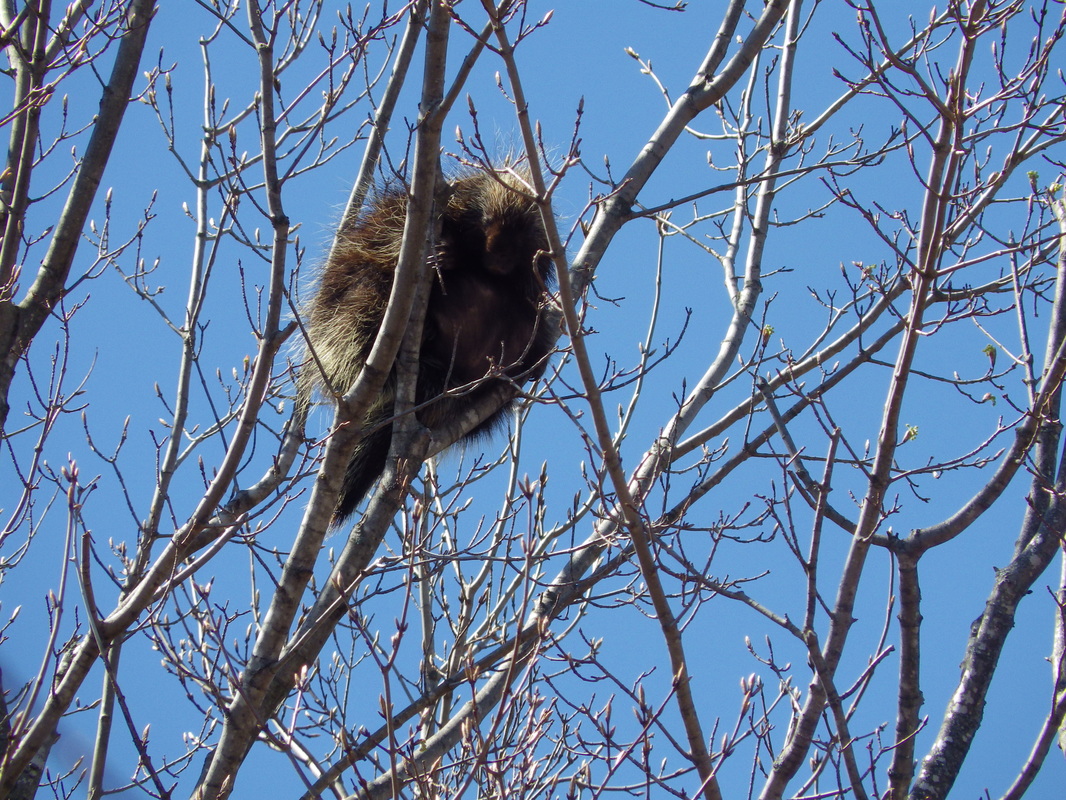|
Walking along the road frontage of the Would-Be Farm early this spring, Mr. Linton and I both noted the willow twigs littered along the berm. We idly kicked them into the ditch. I was thinking about how willow is the source of aspirin, and about willow whistles, and the phrase "wearing the willow" as an old-fashioned euphemism for mourning. In vain, I tried to remember the name for the maiden goddess associated with willow. We reached the far end of our walk and then returned over the same stretch of road. Again with the willow branches.
I had been hearing the pattering sound but hadn't paid attention. There it was: a porcupine with the springtime munchies, plowing through the sweetest and juciest bits of the tree, raining his discards at our feet.
"I thought it was from a big truck," I said, not bothering to explain farther. In Tampa, it's a neighborhood hazard: delivery trucks often knock branches down from the overhanging oaks. "Not many of them around here," he answered, referring to the trucks, not the oaks. Unarguable fact. I'd seen a yellow Schwann's truck on the Would-Be farm's nearest road. Once. We pondered the underparts of the continent's second-largest rodent for a long, companionable moment. The porcupine never stopped grazing, using a clawed forepaw to direct a twig toward his mouth. A bite or two later and the twig separated from its branch and slipped through the animal's paws. Seemed like a waste –– all those pieces of tree littered about –– but then willows will easily grow from a downed branch. Maybe it was a favor the porcupine was doing for the tree. He was eating not just for himself in the springtime moment, he was eating for his future and his progeny, and for the future of willow trees.
6 Comments
Randy
6/17/2016 11:12:49 am
Last fall we had planted 2 dappled willows at the cottage to replace a couple shrubs near the lake shore that had died.
Reply
Amy
6/17/2016 08:29:31 pm
They are determined creatures. Good luck. Maybe a tin sleeve for the trees until the beaver move along?
Reply
adirondack spruce
6/17/2016 07:45:35 pm
Fun Pic! We sometimes scoop up our arboreal friends, bring them out of the windy chilly an' into the house over the long winter to see if they'll domesticate a bit. Them fluffy porkypines, beavers, red squirrels, an' boa constrictors keeps homefront interesting - I can tell you that !
Reply
Amy
6/17/2016 08:30:32 pm
Thank you!
Reply
red spruce
6/18/2016 05:49:16 pm
Love looking up at the early evening sky to see the bats silently darting about an' soaking up their little bodyweights in mosquitoes. Pesky in the living room rafters tho !
Amy
6/20/2016 08:15:31 pm
Me too!
Reply
Leave a Reply. |
About the Blog
A lot of ground gets covered on this blog -- from sailboat racing to book suggestions to plain old piffle. FollowTrying to keep track? Follow me on Facebook or Twitter or if you use an aggregator, click the RSS option below.
Old school? Sign up for the newsletter and I'll shoot you a short e-mail when there's something new.
Archives
June 2024
Categories
All
|


 RSS Feed
RSS Feed
